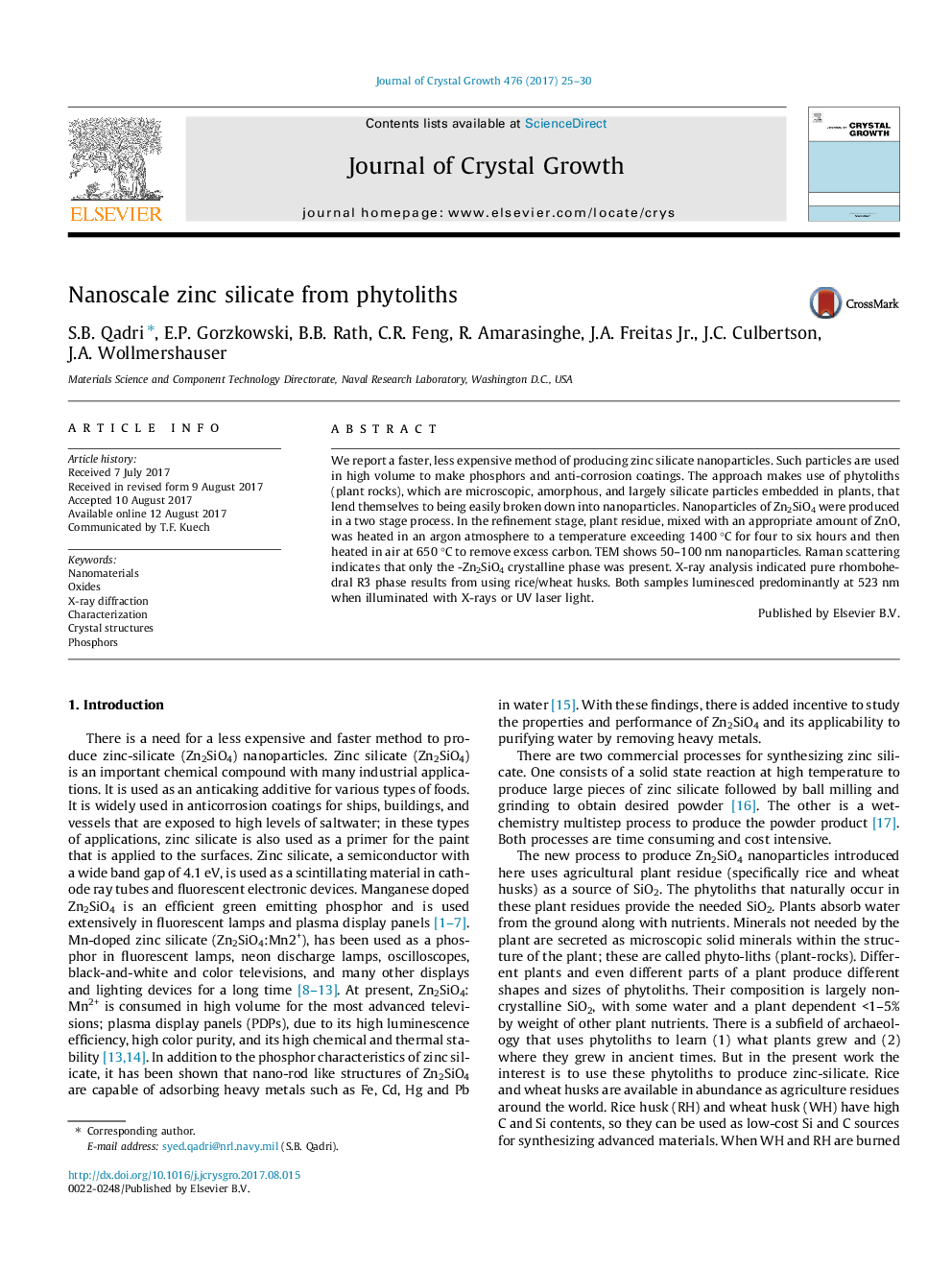| Article ID | Journal | Published Year | Pages | File Type |
|---|---|---|---|---|
| 5489132 | Journal of Crystal Growth | 2017 | 6 Pages |
â¢This paper presents results on converting rice and wheat husks to zinc silicate.â¢Raman and XRD confirmed the formation of nanoparticles of zinc silicate.â¢Zn2SiO4 consisted of pure rhombohedral R3¯ phase.
We report a faster, less expensive method of producing zinc silicate nanoparticles. Such particles are used in high volume to make phosphors and anti-corrosion coatings. The approach makes use of phytoliths (plant rocks), which are microscopic, amorphous, and largely silicate particles embedded in plants, that lend themselves to being easily broken down into nanoparticles. Nanoparticles of Zn2SiO4 were produced in a two stage process. In the refinement stage, plant residue, mixed with an appropriate amount of ZnO, was heated in an argon atmosphere to a temperature exceeding 1400 °C for four to six hours and then heated in air at 650 °C to remove excess carbon. TEM shows 50-100 nm nanoparticles. Raman scattering indicates that only the -Zn2SiO4 crystalline phase was present. X-ray analysis indicated pure rhombohedral R3¯ phase results from using rice/wheat husks. Both samples luminesced predominantly at 523 nm when illuminated with X-rays or UV laser light.
